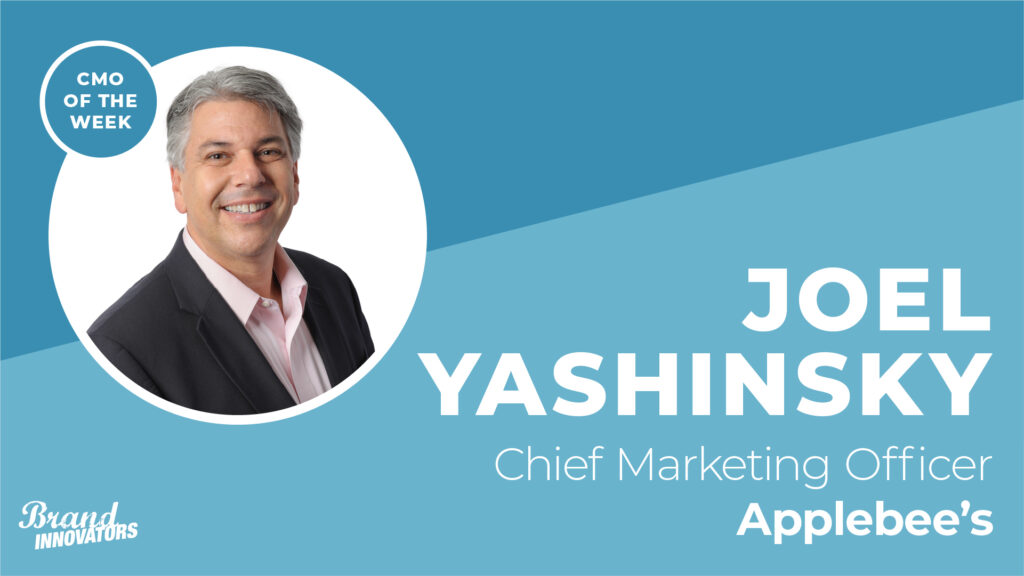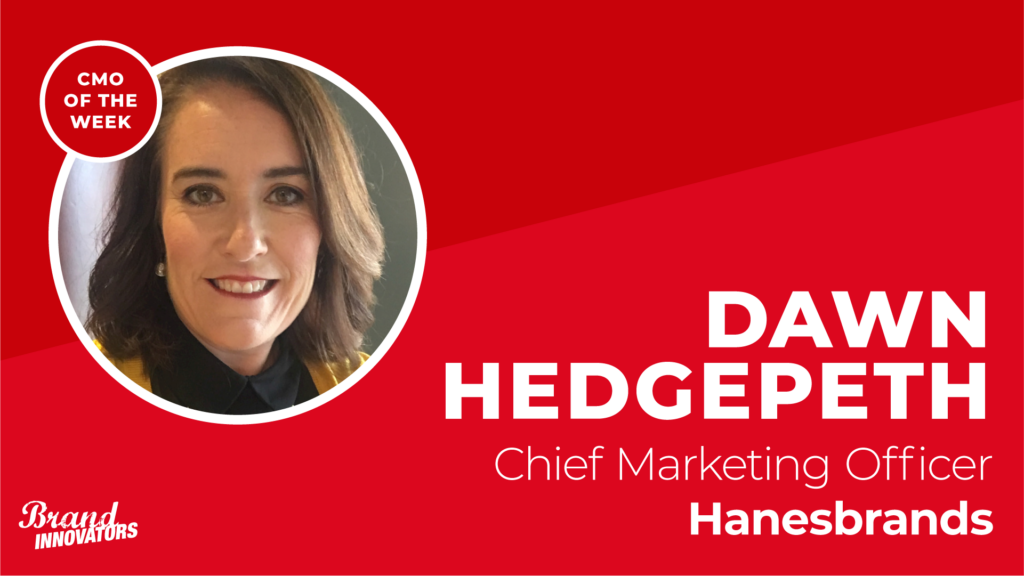With global COVID-19 cases on the rise again, 2022 is looking to be as unpredictable a year as the two before it.
But one marketer who’s prepared for the challenge is Patrick McLean, SVP and chief marketing officer at Walgreens, whose efforts to help vaccinate the retailers’ customers in 2021 will continue well into the new year.
“We’re right around 50 million shots in arms [as of early December], and it’s still rising,” McLean says of the free vaccines that Walgreens has issued at its locations. “The Walgreens brand has really shone through this. We probably haven’t been this relevant, if I’m being honest, in a long time. All of a sudden, the brand and the pharmacists and the role we play in communities across America has really been remarkable, so I’m extremely proud of the company and proud of all our team members. They’re the real heroes.”
McLean was one of the featured speakers at Brand Innovators’ “Looking Ahead: Retail Predictions in 2022” Livecast on December 1, where he shared many insights from marketing in the pandemic era that will continue to shape the year ahead. Click the link below to watch the full archive of McLean’s interview with Brenda Tuohig, SVP – Data Partnerships at The Trade Desk (which starts at 58:17), and read on for five of McLean’s key predictions for 2022.
- Investing in first-party data and loyalty programs will be the easiest solution to a cookie-less world.
“We made a really bold move a little over a year ago to introduce My Walgreens, which was a reimagined loyalty program but also a reimagined experience for our customers.” Mc Lean says. “We had this goal, we call it mass personalization, which is on the scale in which we’re iterating but still trying to get a really relevant and personalized experience for customers. We now have 95 million-plus people in the My Walgreens platform and in the experience, and it gives us a tremendous amount of insight into our customer and into their behavior – especially on our platforms. If we can improve our experience and that value proposition, it will absolutely enable us to further engage and grow the customer base that we have. Then the privacy landscape and the cookies landscape almost become irrelevant.”
- Retailers will expand their digital and hybrid offerings.
“One of the biggest headwinds for us is creating this balance between the physical retail location and ecommerce and digital engagement,” Mc Lean says. “We have 9,000 locations across the country, and that’s an increased asset for us. But people are expecting not just the physical presence but the complimentary digital presence. When you’re a legacy retailer like us, there’s a lot of challenges in trying to create that connectivity. It just requires a lot of disciplined investments and the right investments, and also just looking at the network.
“The last thing we want to do is start closing stores, but obviously it’s a dynamic that we’ve gotta recognize that if more and more customer engagement is moving digitally, what is the evolving role of the store? In our case, we’re a very services oriented business, we also have the front of store retail business, but the pharmacy is very much a service business and the role that pharmacists play in people’s lives is significant. And that has historically been a very physical interaction in the pharmacy, and I think that will still continue, but we also need to find other ways for the pharmacy expertise and the pharmacist to be present in people’s lives and those digital channels. I think throughout retail, there’s probably many examples of retailers going through exactly the same thing. Where you’ve got this experience and capability that lives in a physical presence, and how do you create a synergy between how that lives in the physical and how that lives in the digital and what’s the right balance of investment between the two? I think that’s a real open question for retail in general, and something we’ll continue to look at as a headwind as we try to figure out ‘What does the Walgreens of the future really look like?’”
However, there’s one arena McLean jokes that he hasn’t cracked. “If we could figure out a way to vaccinate people in the metaverse we’d definitely do it, but we’re not there yet.”
- Retail media networks will become a scalable compliment to traditional media.
McLean is bullish on the opportunity for marketers with the Walgreens Advertising Group, one of the country’s largest retail media networks. “If you’re a media leader and trying to figure out the right balance of investment, you’ve got an opportunity to reach almost 100 million people and know with a high degree of certainty the performance of that media execution, you’re gonna put some dollars there and you’re gonna test it and then if it works you’re gonna start scaling it,” he says. “That’s what we’re seeing with Walgreens Advertising Group, there has just been a tremendous amount of demand. Our specific offering there which we think is exceptionally powerful, is we don’t just offer that in terms of accessing media on our owned properties like Walgreens.com or in our app. But we actually offer the access off our premise.
“In partnership with our customers, we’re actually activating in digital channels and leveraging the power of our first-party data. And the results that we’ve seen on behalf of those customers are just as compelling as the ones we’ve seen for ourselves. It’s an alternate revenue stream to further monetize the investments we’re making here, but also all ships will rise as a result. CPG partners will sell much more product and have a much more efficient and better ROI on their media spend, and for us that sale is gonna wind up in a Walgreens. It’s just such a powerful way for us to unlock even more value.”
- Personalized messaging will help further ramp up Walgreens’ vaccination efforts.
“We’ve just learned a ton through the experience of the vaccine and just communicating in marketing around the vaccine,” McLean says. “It’s very much an exercise of using all the data assets that I’ve described and trying to extract as much insight as possible about what’s happening in different parts of the country. You’ve got places still where there’s high demand for vaccines and people getting boosters as soon as they’re eligible, and then you’ve got parts that are still lagging for even the first dose. And you’ve got different reasons for people to be hesitant, it’s a very personal decision for people to get vaccinated.
“We’ve done a lot of insight work about trying to cluster like-minded people in like-minded parts of the country and tailored and targeted our marketing outreach to those communities based on a number of different variables thinking about underserved communities and how those have different dynamics than a wealthy community or in a different part of the country. It’s a real challenge, and it goes back to how do we change our strategy? It’s gone very much from a ‘one message to all’ to very much this mass personalization approach. To the extent that I can uniquely tailor my marketing to you as an individual, I’m gonna do that.”
- Dynamic creative is the next big opportunity for marketers to unlock.
“We’ve got some great examples of using AI in things like our email subject lines, so we’ll continue to experiment with dynamic creative,” McLean says. “We’ve had to make some really big investments in our data platforms, we’ve moved all of our data assets to the cloud in partnership with Microsoft, and we’re at the close to final stages of implementing the Adobe marketing technology stack and what those things allow us to do is operate at the scale at which we’re operating and orchestrate across channels. There was this first phase of this where we would experiment in the email channel and how could we experiment with dynamic creative or AI to generate copy variations?
“And then once you get into the world of Adobe you’re able to orchestrate not just in a single channel but across all of our channels. That’s the next opportunity for us to unlock. We’ve done a good job leveraging some of the technology you just described, but we’re just now orienting our organization to leverage the Adobe technology. Our data is in a really good place now, and our data science team is getting more sophisticated. So all of that is going to work to unlock another phase of this where it’s a more personalized experience but not just in-channel throughout the entire ecosystem of your experience with Walgreens.”
Andrew Hampp is an entertainment marketing consultant for Brand Innovators and the founder of consultancy 1803 LLC, based in Berkeley, California.




